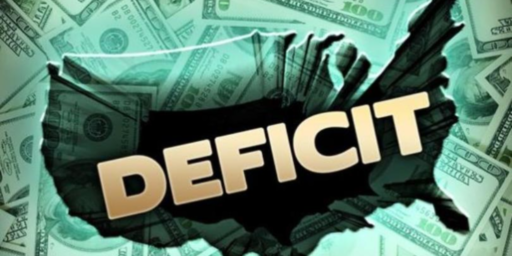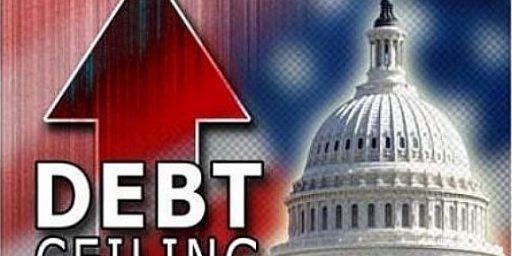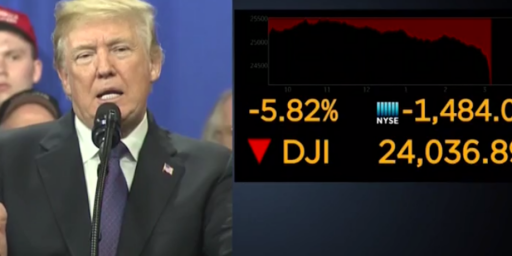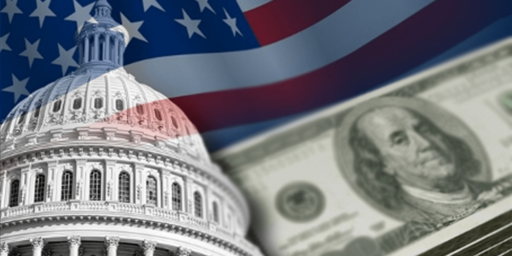Pushing On A String
Why is unemployment looking like the level of unemployment that was forecasted as if there were no stimulus spending? Why are interest rates going up and not down? One possible answer is that the initial forecasts of unemployment were too optimistic. Another possibility is that the policies are having the opposite effects that were desired1.
NEW YORK (AP) – The Federal Reserve announced a $1.2 trillion plan three months ago designed to push down mortgage rates and breathe life into the housing market.
But this and other big government spending programs are turning out to have the opposite effect. Rates for mortgages and U.S. Treasury debt are now marching higher as nervous bond investors fret about a resurgence of inflation.
That’s the Catch-22 threatening to make an awful housing market potentially worse and keep the economy stuck in a funk. Kick-starting the economy requires higher spending, but rising rates mean fewer Americans will be able to refinance their home loans. And some potential buyers will be shut out of the market by higher monthly payments they won’t be able to afford.
The problem is that people who buy U.S. government bonds are watching what the Fed does, they are watching what the Obama Administration is doing, and they are using that information and revising their expectations for inflation. The Fed has taken an unprecedented step in using quantitative easing. The federal government is committing to spending trillions of dollars it doesn’t really have—i.e. selling debt. If inflation takes off, then these investors would be paid back in dollars that have less purchasing power than the dollars they lent to the government.
“If the meltdown continues in the bond market, then mortgage yields will soon be at levels that choke off refinancing activity,” said economist Ed Yardeni, who runs his own investment firm. “Even worse, they could abort any necessary recovery in home sales and prices.”
Yardeni coined the term “bond vigilantes” in 1983 to describe how traders took matters into their own hands when they felt the Fed wasn’t doing enough to fight inflation, which was running at an annual rate of more than 3 percent at that time.
So what has set off the vigilantes this spring, at a time when the consumer price index is down at an annual rate of 0.7 percent?
One explanation is that bond investors anticipate a greater supply of government debt being sold to fund federal spending. Investors are also increasingly fearful that the trillions of dollars the government will need to borrow in the coming years to finance the various stimulus programs will lead to a new bout of inflation.
The White House estimates that the government will rack up an unprecedented $1.8 trillion budget deficit this year – more than four times last year’s all-time high.
“The bond market is calling the Federal Reserve out,” said Mike Larson, a real estate analyst at Weiss Research Inc. in Jupiter, Fla. “Investors are saying that the Fed can’t just print money out of thin air to finance a massive deficit.”
In other words we could be looking at a tug-of-war between fiscal and monetary policies. The Fed typically sees its main job as fighting inflation. As such, if it abandons that job the bond markets will react….badly.
And it isn’t just the quantitative easing alone, in my view. Sure that is potentially inflationary and could be problematic. The thing is the Fed is not like the rest of the government. It doesn’t answer to constituents, it doesn’t even really answer to the President all that much in that once appointed the President can’t remove anyone from the Board of Governors over policy matters.2 So, if it was just quantitative easing alone that was going on here, the Fed could turn it off as soon as it felt it was no longer an issue.
Federal spending on the other hand is like crack cocaine. Once you start spending it, it is almost impossible to stop. If spending is started for some sort of national health care plan it will be highly unlikely that the plan will be dismantled.
Sure, President Obama has promised to cut the deficit in half by the end of his first term, but there is still a small wrinkle. Many projections for the deficit show it declining up to 2013, then it starts to increase again. Bond traders aren’t going to be looking out till just the next election but arguably out at least 10 years, maybe even longer. Granted such projections are highly variable, but if the consensus is that inflation is going to go higher under most scenarios then it is going to mean trouble.
The honey moon is over for President Obama and his Administration, and it looks like the bond market ruined it.
______
1I noted this possibility when I first blogged about quantitative easing.
Basically the Fed is going to add more money to its version of a checking account and use that money to buy up various assets. As this happens the price of the asset will rise and the interest rate fall. This, in theory, would make it cheaper to take out loans and thus allow for more money to go out into the economy and stimulate demand. However, there are serious problems with this which is why most central banks don’t use this tool. First, the central bank can lose money on the assets it buys thus leaving taxpayers on the hook. Second it could create too much inflation and even hyper-inflation. Third it can be seen as an indicator of how desperate things have gotten so it could have precisely the opposite effect that is intended.
The problem with inflation is even more of a concern when the federal government is borrowing lots of money to pay for its programs. The incentive to monetize the debt starts to mount.
2Further, the Board of Govenors at the Federal Reserve have staggered appointements. It could be years before a majority of them are up for re-appointment.






“I’ll take ‘all unemployment estimates are political’ for $200 Alex.”
or for a different game “What is Fooled by Randomness?”
(Is google slow for anybody today?)
In related news, The Economist on exit strategies: